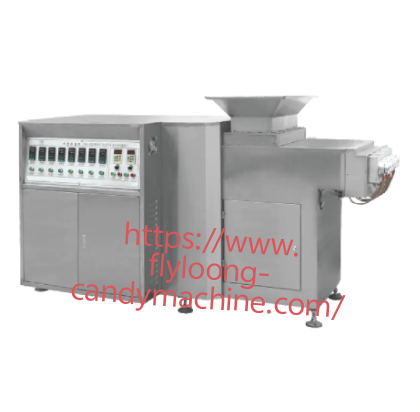technology has transformed traditional candy-making into a more streamlined and scalable process, making it easier for manufacturers to produce consistent and high-quality toffee products. This machine is an essential part of modern candy production lines, combining precision, automation, and hygiene to meet increasing market demands.
Toffee, known for its chewy texture and rich flavor, requires exact control of temperature, mixing, and forming. Manual processes often fall short in delivering the consistency needed for commercial success. That’s where specialized machines come in, helping producers maintain uniformity while increasing batch sizes and improving production efficiency.
A typical toffee candy machine integrates multiple steps into a continuous process. The core components usually include a cooking system, a forming system, and a cooling conveyor. The cooking system manages the delicate balance of sugar, glucose, butter, and other ingredients, ensuring the proper caramelization needed for authentic toffee texture. Temperature control is key during this phase to avoid overcooking or crystallization, both of which can affect the final product’s quality.
Once cooked, the toffee mass is transferred to the forming section. This is where the machine shapes the candy according to the desired specifications. Whether you’re producing wrapped bite-sized pieces or bars, forming rollers or cutters provide a clean and uniform shape. The flexibility of the forming mechanism allows for quick product changes, making it ideal for manufacturers looking to produce multiple varieties of toffee.
Cooling is the next critical stage in the process. Toffee needs to cool at a controlled rate to maintain its texture and prevent sticking or deformation. A cooling conveyor system helps stabilize the toffee before it reaches the packaging line. At this point, the product is ready for wrapping and shipping, having gone through a fully automated process that reduces labor and minimizes human error.
One of the main benefits of a toffee candy machine is the improvement in production hygiene. Food-grade stainless steel is commonly used for all contact surfaces, making the machine easy to clean and maintain. Automation also reduces the number of touchpoints during production, lowering the risk of contamination and ensuring compliance with food safety standards.
Efficiency and consistency aside, another important factor is customization. Many modern machines offer the ability to adjust speed, shape, and size with minimal downtime. This is particularly useful for businesses that operate in competitive markets where differentiation matters. The ability to introduce new flavors or product lines quickly can be a strategic advantage.
Energy efficiency is also a growing consideration. Machines are now designed with energy-saving components and intelligent heating systems that reduce waste and optimize performance. These enhancements not only contribute to sustainability efforts but also lower operating costs in the long run.
Maintenance and operator training are crucial aspects of machine integration. User-friendly control systems make it easier for operators to monitor the production line and make real-time adjustments. Diagnostic tools and alert systems help identify issues before they affect output, allowing for preventive maintenance that reduces downtime.
Scalability is another advantage worth noting. Small-scale machines can meet the needs of artisanal producers, while larger systems support industrial-level operations. As businesses grow, many machine models allow for expansion or integration with other equipment such as packaging lines, coating systems, or labeling machines.
Investing in the right toffee candy machine means taking into account your production goals, available space, and technical resources. Whether you are just starting out or looking to upgrade an existing line, selecting a reliable and adaptable machine can enhance product quality and streamline your operations.
